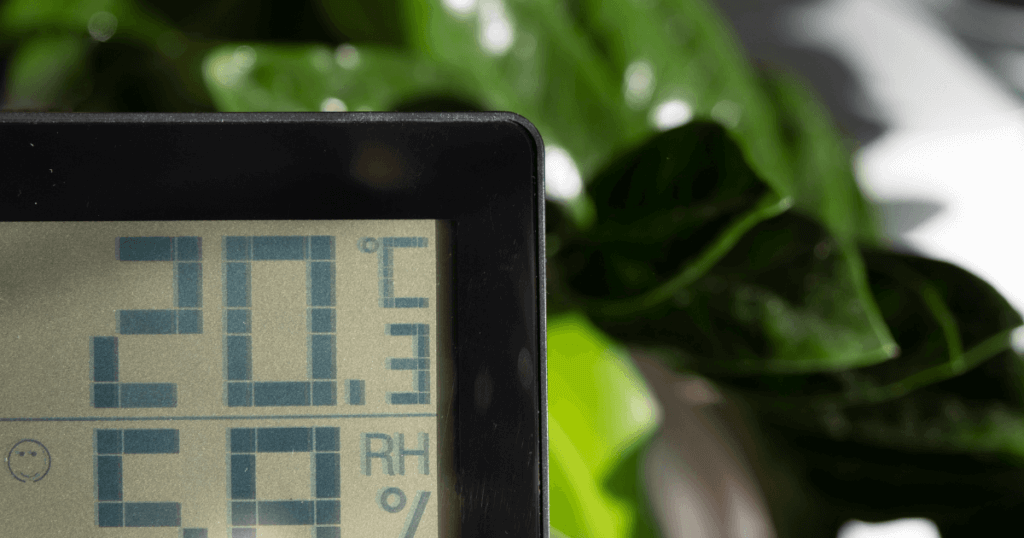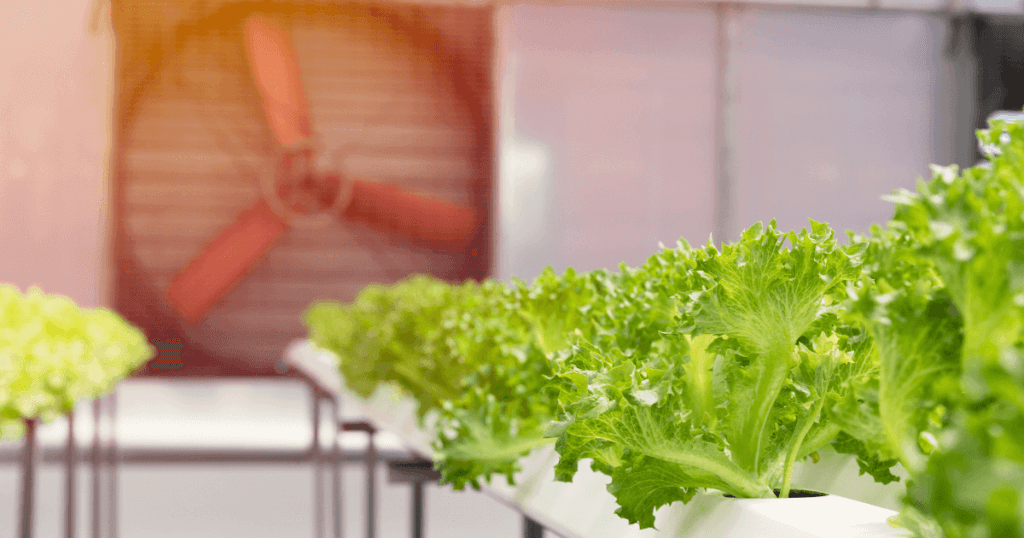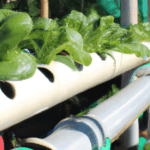Mastering Climate Control in Indoor Farming

Climate control plays a crucial role in the success of indoor farming. With the rising demand for sustainable and efficient agricultural practices, indoor farming has gained popularity. By providing a controlled environment, farmers can grow crops year-round, regardless of external weather conditions. However, achieving optimal climate control can only be challenging with the right knowledge and equipment.
In this comprehensive guide, we will explore the key aspects of climate control in indoor farming and provide valuable insights to help you master this essential technique. From temperature and humidity management to lighting and ventilation, we will delve into the intricacies of maintaining ideal growing conditions. So, let’s get started and unlock the secrets to successful indoor farming!
Table of Contents
Understanding the Importance of Climate Control
Climate control maintains optimal environmental conditions within an indoor farming facility, including temperature, humidity, light, and air quality. These controlled conditions allow farmers to create an ideal growth environment for plants, maximizing yieldThe amount of crop or harvest produced from a given area or ... More, quality, and resource efficiency.
Indoor farming offers numerous advantages over traditional outdoor cultivation. By controlling the climate, farmers can eliminate the dependency on seasonal changes, reduce water consumption, minimize pesticide usage, and optimize plant nutrient delivery. With precise control over various environmental factors, indoor farmers can mimic the perfect conditions for each crop, regardless of the external climate.
The Key Factors of Climate Control in Indoor Farming
1. Temperature Management
Temperature is critical in indoor farming as it directly influences plant growth and development. Each crop has an optimal temperature range at which it thrives. Farmers can accelerate growth, enhance photosynthesisThe process by which plants convert light energy into chemic... More, and encourage healthy root development by maintaining the appropriate temperature.
To ensure optimal temperature control, farmers utilize heating and cooling systems. These systems can be integrated with sensors and automated controls to maintain a consistent temperature throughout the day and night. Proper insulation and shading techniques also contribute to maintaining the desired temperature range.
2. Humidity Regulation
Humidity refers to the amount of moisture present in the air. The right humidity level is essential for plant health, affecting transpiration, nutrient uptake, and disease susceptibility. Different crops have varying humidity requirements, and maintaining the correct balance is crucial for their growth and productivity.
Farmers employ humidifiers and dehumidifiers to control humidity, which helps adjust the moisture content in the growing environment. Additionally, proper air circulation and ventilation systems aid in humidity regulation by preventing excess moisture buildup.
3. Lighting Optimization
Light is one of the most crucial factors in plant growth, as it serves as the primary energy source for photosynthesisThe process by which plants convert light energy into chemic... More. In indoor farming, artificial lightingThe use of artificial light sources, such as LED or fluoresc... More provides plants with the required spectrum and intensity of light throughout their growth stages.
LED (Light Emitting Diode) technology has revolutionized indoor farming by offering energy-efficient and customizable lighting solutions. Farmers can optimize plant growth, control flowering, and influence crop yieldThe amount of crop or harvest produced from a given area or ... More by tailoring the light spectrumThe range of wavelengths within the electromagnetic spectrum... More, duration, and intensity. Implementing light sensors and timers ensures precise control over lighting cycles, mimicking natural day-night patterns.
4. Ventilation and Air Exchange

Proper ventilation and air exchange are vital for maintaining a healthy and productive indoor farming environment. Effective ventilation systems remove stale air, control odours, and regulate carbon dioxide levels for optimal photosynthesisThe process by which plants convert light energy into chemic... More. Additionally, ventilation aids in temperature and humidity control, preventing the buildup of excessive heat or moisture.
Mechanical ventilation systems, such as exhaust fans, intake vents, and ducting, facilitate air movement within the indoor farming facility. It is crucial to balance air exchange rates to prevent excessive heat loss or gain while ensuring a constant supply of fresh air.
Advanced Techniques for Climate Control
Advanced techniques and technologies are available to enhance indoor farming’s climate control further. These innovations give farmers greater precision and control over the growing environment, improving crop quality and yieldThe amount of crop or harvest produced from a given area or ... More. Here are some notable techniques:
1. CO2 Enrichment
Carbon dioxide (CO2) is a vital component for photosynthesisThe process by which plants convert light energy into chemic... More. By enriching the growing environment with additional CO2, farmers can enhance plant growth and productivity. CO2 generators or tanks maintain optimal CO2 levels, typically between 800 to 1200 parts per million (ppm).
2. Nutrient Film Technique (NFT)
The Nutrient Film Technique is a hydroponic A soilless cultivation method where plants are grown in nutr... More system that allows plants to grow with their roots suspended in a shallow film of nutrient-rich water. This technique ensures a constant supply of nutrients to the plants while maintaining precise control over temperature and humidity.
A soilless cultivation method where plants are grown in nutr... More system that allows plants to grow with their roots suspended in a shallow film of nutrient-rich water. This technique ensures a constant supply of nutrients to the plants while maintaining precise control over temperature and humidity.
3. Vertical Farming
Vertical farmingA method of growing plants in vertically stacked layers or t... More utilizes vertical space by stacking multiple layers of crops, creating a high-density growing system. This technique maximizes space utilization and allows efficient climate control by ensuring uniform lighting, temperature, and humidity across all layers.
4. Automated Climate Control Systems
Advanced automation systems integrate sensors, controllers, and actuators to monitor and regulate climate conditions in real time. These systems adjust temperature, humidity, lighting, and ventilation parameters based on predefined setpoints, ensuring precise and consistent control over the growing environment.
5. Data Analytics and AI
Data analytics and artificial intelligence (AI) technologies have transformed indoor farming by providing valuable insights and predictive capabilities. By analyzing sensor data, AI algorithms can optimize climate control parameters, detect anomalies, and predict crop growth patterns. This enables farmers to make data-driven decisions for improved resource efficiency and higher crop yields.
Conclusion
Mastering climate control is crucial for achieving success in indoor farming. Farmers can create an optimal environment that promotes healthy plant growth and maximizes crop yieldThe amount of crop or harvest produced from a given area or ... More by understanding the significance of temperature, humidity, lighting, and ventilation. Implementing advanced techniques and technologies further enhances climate control precision and efficiency, leading to sustainable and productive indoor farming practices.
Remember, climate control is just one piece of the puzzle in indoor farming. Other factors, such as crop selection, nutrient management, and pest control, also play significant roles in overall success. Combining all these elements and staying updated with the latest advancements, you can become a proficient indoor farmer and reap the rewards of year-round sustainable cultivation.
So, start implementing climate control techniques in your indoor farm today and unlock the full potential of your crops!
FAQs –
Other useful Sites related to Climate Control In Indoor Farming
- https://www.greenhousegrower.com/production/why-is-hvac-so-hard-for-indoor-farms/
This article delves into the intricacies of HVAC (Heating, Ventilation, and Air Conditioning) systems in indoor farming environments. The article provides insight into the challenges such systems pose, including energy consumption issues and maintaining an optimal growing environment. Whether you’re a professional grower, a researcher, or an enthusiast, this page can provide valuable knowledge on an often-overlooked aspect of indoor farming operations. - https://www.linkedin.com/advice/0/what-key-performance-indicators-benchmarks-vertical
- https://www.freightfarms.com/blog/extreme-farming-climates
The page elaborates on how Freight Farms’ hydroponic A soilless cultivation method where plants are grown in nutr... More systems can operate efficiently in extreme climates, from intense heat to freezing conditions. It also provides case studies that illustrate the robustness and resilience of these farming systems. For those contemplating implementing indoor farming systems or simply wanting to understand the possibilities of modern agricultural technology, this page can offer valuable insights.
A soilless cultivation method where plants are grown in nutr... More systems can operate efficiently in extreme climates, from intense heat to freezing conditions. It also provides case studies that illustrate the robustness and resilience of these farming systems. For those contemplating implementing indoor farming systems or simply wanting to understand the possibilities of modern agricultural technology, this page can offer valuable insights.